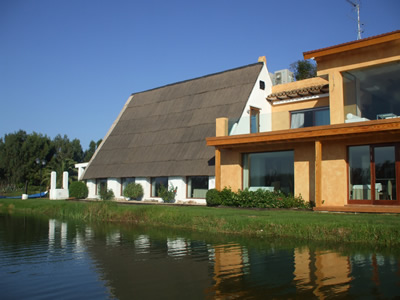ICNS 2021 - The Seventeenth International Conference on Networking and Services
May 30, 2021 - June 03, 2021
ICNS 2021
Onsite and Online Options: In order to accommodate a large number of situations, we are offering the option for either physical presence or virtual participation (pdf slides or pre-recorded videos).
ISSN: 2308-4006
ISBN: 978-1-61208-853-2
ICNS 2021 is colocated with the following events as part of InfoSys 2021 Congress:
- ICNS 2021, The Seventeenth International Conference on Networking and Services
- ICAS 2021, The Seventeenth International Conference on Autonomic and Autonomous Systems
- ENERGY 2021, The Eleventh International Conference on Smart Grids, Green Communications and IT Energy-aware Technologies
- WEB 2021, The Ninth International Conference on Building and Exploring Web Based Environments
- DBKDA 2021, The Thirteenth International Conference on Advances in Databases, Knowledge, and Data Applications
- SIGNAL 2021, The Sixth International Conference on Advances in Signal, Image and Video Processing
- BIOTECHNO 2021, The Thirteenth International Conference on Bioinformatics, Biocomputational Systems and Biotechnologies
ICNS 2021 General Chair
| |
 |
Jaime Lloret Mauri
Universitat Politecnica de Valencia
Spain
|
|
|
|
ICNS 2021 Steering Committee
| |
 |
Eugen Borcoci
University "Politehnica" of Bucharest (UPB)
Romania
|
|
 |
Mary Luz Mouronte López
Universidad Francisco de Vitoria - Madrid
Spain
|
| |
 |
Carlos Becker Westphall
Federal University of Santa Catarina
Brazil
|
|
 |
Jeff Sedayao
Intel Corporation
USA
|
| |
 |
Alex Sim
Lawrence Berkeley National Laboratory
USA
|
|
 |
Juraj Giertl
Deutsche Telekom IT Solutions
Slovakia
|
| |
 |
Ivan Ganchev
University of Limerick, Ireland
Plovdiv University "Paisii Hilendarski", Bulgaria
|
|
|
|
Special tracks:
EdgeIntelli: Intelligence on the Edge
Chair: Prof. Dr. Rute C. Sofia, fortiss, Germany sofia@fortiss.org
Co-chair: Prof. Dr. Jesse Luo, Shandong University, China, and Emocean GmbH, Germany jesse.luo@emocean.io
QuVA: Quality of Experience (QoE) Driven VR/AR Multimedia System Design
Chair: Assist. Prof. Dr. Jounsup Park, University of Texas at Tyler, USA jpark@uttyler.edu
LANS: Learning & Analytics in Networks and Services
Chair: Dr. Arif Selcuk Ogrenci, Kadir Has University, Turkey ogrenci@khas.edu.tr
ICNS 2021 conference tracks:
Trends in networking and services
Network function virtualization (NFV); Service availability in the NFV; Multi-services in LTE; Resilience in software defined networks (SDN); Indoor 5G wireless access; Scalability in 5G; Cognitive 5G; QoS in SDN-enabled 5G systems; Cross-layer frameworks; Services in big data platforms; Technologies in Cloud storage service; Cloud-based Web applications; Multi-operator shared heterogeneous networks; Virtualization-based control; Cloud radio access; Incremental synchronization in Clouds; Changes for cognitive wireless networks; Power efficiency via interferences; Cognitive networks and spectrum sensing; Massive beamforming ; Ultra-lean systems; Spectrum-sharing communications; Information retrieval protocols; Multi-access MAC protocols; Multi-user indoor communications; Energy harvesting; Sensing-as-a-Service; Ultrasound sensor networks; QoS-aware body area networks; Robust sensing services; Cloud of things; Cloud and smart grid vulnerabilities; Polarization-agile antennas; Service perceptual quality; Geographical routing protocols; Femto-Clouds; Services in urban environments; Services for data handling in smart cities; Wideband massive MMO; Cache performance; Energy-efficient resource allocation; Content delivery service; MIMO cognitive radio networks; All-spectrum cognitive solutions; Cognitive machine-to-machine networks; Adaptive multiple access schemes; Network service providers; Heterogeneous cellular networks; Caching in mobile cellular networks; Cognitive radio ad hoc networks; Opportunistic unlicensed spectra utilization; Adaptation in Cyber-physical systems; Service availability models
Slicing and 5/6/7G technologies
Network slicing models; 5G Network slicing Architecture; 5G/6G Networks slicing; End to End (E2E) network slicing; Automated networks slicing; Network Slice as a Service(NSaaS); Service slicing; IoT service slicing; Slicing-as-a-Service (SlaaS); Slicing and orchestration; Latency-sensitive 5G services; Differentiated slice-based 5G services; 5G E2E (End to End), 6G Cellular data networks; Indoor 5G Open Radio Access Network (O-RAN); 5G mmWave; 7G and 8G network and High speed internet. Network slicing market. Networks slicing ROI (Return on Investment); 6-7-8G and ROI.
Emerging Network Communications and Technologies
Software defined networks and Network functions virtualization; Future mobile networks: 4G, 5G, and LTE spectra; Mobile Cloud systems; Internet of Things (IOT); Sensing and sensor networks; Energy-aware networks; Content-oriented networking; Cellular cognitive networks; Access and home networks; Ad hoc networks; Application-specific networks (e.g. SANs); Autonomic Networks; Delay-tolerant Networking; Distributed communications systems & applications; High-speed & optical networks; Mobile networking and systems; Multimedia and multicast communications; Networking Communication theory; Network modeling & simulation; Network monitoring techniques; Network security; Next Generation Networks (NGN); Overlay networks; Peer-to-peer networking; Programmable and Active Networks; Sensor networks; Wireless and Satellite Networks; Content-oriented networks; Ambient environments
CLOUD/GRID Networks and Services
CLOUD frameworks, architectures, computation, storage; GRID theory, frameworks, methodologies, architecture, ontology; Cloud and GRID infrastructure and technologies; CLOUD/GRID middleware; CLOUD computing, utility computing, autonomic computing, metacomputing; Programmable CLOUD/GRID; CLOUD services and applications; VIRTUALIZATION, modeling, and metadata; Resource management, scheduling, and scalability in CLOUD/GRID; CLOUD/GRID monitoring, control, and management; Traffic and load balancing in CLOUD/GRID; User profiles and priorities in CLOUD/GRID; Performance and security in CLOUD/GRID systems; Fault tolerance, resilience, survivability, robustness in CLOUD/GRID; QoS/SLA in CLOUD/GRID networks; CLOUD/GRID fora, standards, development, evolution; CLOUD/GRID case studies, validation testbeds, prototypes, and lessons learned
Ubiquitous mobile services and protocols
Frameworks, architectures, and languages for ubiquitous services; Queries, transactions and workflows in mobile and ubiquitous Networks; Algorithms for ubiquitous systems; SLA/QoS in ubiquitous services; Ontology-based services; Location-based services; Protocols and interaction mechanisms for ubiquitous services; Mobile services and service convergence; Service discovery mechanisms; Tracking in ubiquitous environments; Measurement, control, and management of ubiquitous services; Design and development of ubiquitous services; Wireless/mobile service delivery
Multi-technology service deployment and assurance
Service-oriented architectures; Service definition, creation, bundling, deployment; Service reuse, composition and service feature interaction; Service orchestration and federation; Inter-provider service dependency; Intra-provider service dependency and service interaction; Service middleware and service development platforms (SDPs); Service open architecture (SOA); Profiling and service adaptation; Service privacy and security; Quality of service, service level agreement [QoS/SLA]; Service agreement violations; Mobile services and service migration; Reliability, availability, serviceability [RAS]; Service performance metrics; Traffic engineering, metering, monitoring; Voice over IP services; IP Multimedia services; Real-time/not-real-rime services; Real-time services over IP/IPv6; Service performance evaluation, tools, simulation
Next Generation Networks and Ubiquitous Services
Methodologies, development support, and tools for NGN and converging services; NGN and convergence of ubiquitous services; NGN frameworks, architectures, and concepts; NGN technologies and mechanisms; QoS/SLA, traffic in NGN; NGN transport/service layered capabilities and operations; NGN concepts for active, ad hoc, mobile, and wireless networks; 3G, 4G, and 5G Mobile networks; Fixed/mobile networks integration and internetworking; Services and service differentiation over NGN; Managing ubiquitous services in NGN; NGN interworking, non-NGN interoperability, migration; Regulatory services in NGN and standard activities; NGN device instrumentation; NGN policy-based control; Next Generation Internet
Network Control and Management
Network, control and service architectures; Measurement of stream characteristics (reordering, delay, losses, jitter, etc.); Network signaling, pricing and billing; Network middleware; Network management, monitoring and control; Network resource scheduling; Networks policy-based management; Management of autonomic networks and systems; Telecommunication networks architectures; On-demand networks, utility computing architectures; Traffic engineering; Impact of packet dynamics on application performance; Applications and case studies
Multi Provider QoS/SLA Internetworking
Architectures, frameworks, mechanisms for admission control and measurement; QoS in multi-provider and multi-technology networks; Service classes and multi-provider service class discovery; Service level agreement and service assurance in multi-provider environments; Carrier-class end-to-end SLA and QoS monitoring and management; Multi provider accounting/billing/cost sharing; Management, monitoring, and measurements in multi-provider networks; End-to-end QoS/SLA advanced network services in multi-provider networks; End-to-end QoS/SLA for multimedia applications and services in multi-provider networks; Security issues in multi-service provider networks; Business models for multi-providers under QoS/SLA constraints; Standards and fora activities
Software Defined Networking
SDN architectures; Openflow protocols; SDN switches and routers; SDN controllers; Network operating systems; SDN scalability; Virtualization; Flow based operation; Distributed Controllers; State distribution in SDN control; Fault tolerance in SDN; Secure and dependable SDN; Openflow vulnerabilities; Software defined Internet architectures;Scaling virtualized functions; Traffic engineering with SDN; Abstractions for SDN; Network programming languages; Information centric networking and SDN; SDN in cloud computing; SDN applications; SDN in wireless environment; Controller performance evaluations; Mobility solutions
Emergency Services and Disaster Recovery of Networks and Applications
Theory on disaster-tolerant robust networks; Recovery by disruption resource procedures; Security issues with emergency services and disaster recovery; Networks resiliency methods; Formal methods for safety-critical systems; Networks emergency services; Public safety, reliable emergency communications, and applications; Response to the networks emergency services; Disaster prevention and recovery; Fighting mechanisms for disaster of networks and applications; Notifications and recovery in various network technologies; Customer protection and serviceability perception; Cost models and business impact; Cultural and legal aspects; Future advanced network development and evolution; Standards and guidelines; Lawful interception and defense strategies;
Deploying the Future Infrastructures
Advanced Topics and Latest Developments in IPv6; IPv6 Deployment Experiences and Case Studies; IPv6 Enabled Applications and Devices; Deploying large-scale Internet of Things (IoT)-based networks and services; Optical Network Infrastructures; Deploying 5G and beyond networks; Deploying sensor networks; Deploying wireless and wired body-networks
CLOUD/GRID over Optical Burst Switching Networks
Terabit burst switching; Burst assembly for IP DiffServ over optical burst switching networks; Optical network infrastructure for CLOUD/GRID; Synchronous stream optical burst switching; Optical burst switching based CLOUD/GRID architectures; Reliable optical burst switching for next-generation Grid networks; Optical burst switching for IP-over-WDM/DWDM; Customizable Grid-to-optical network; Ultra high capacity optical networks; Hybrid optical burst/circuit switched for CLOUD/GRID-enabled optical networks; Job scheduling in optical burst switching CLOUD/GRID networks; Architecture and middleware for CLOUD/GRID-Over-OBS
Users, applications, and business models
Mobile user interfaces; Ubiquitous user-generated content (weblogs, wikis, etc.); Mobile and ubiquitous computing; User modeling and personalization; Context- and location-aware applications; Toolkits, testbeds, development environments; Tools and techniques for designing, implementing, & evaluating ubiquitous networks and services; Constructing, deploying and prototyping of ubiquitous applications; Evaluation of user models for ubiquitous environments; On-line analytical techniques; Human-computer interaction in ubiquitous computing environments; Ubiquitous e-Development (business, science, health, etc.); Case Studies; Emerging industrial/business/scientific ubiquitous scenarios
Deadlines:
Submission | Mar 23, 2021 |
Notification | Apr 15, 2021 |
Registration | Apr 26, 2021 |
Camera ready | May 01, 2021 |
Deadlines differ for special tracks. Please consult the conference home page for special tracks Call for Papers (if any).








































